Article
A storybuilder for social entrepreneurs with Red Bull Amaphiko

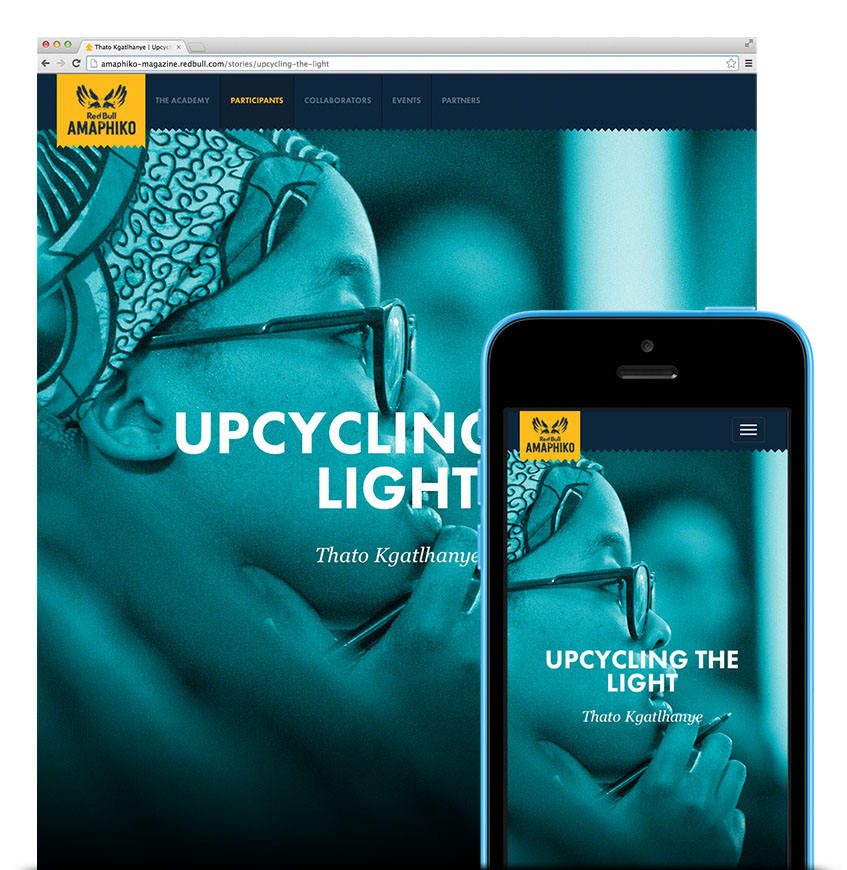
It’s 6.12 am, somewhere over the mid-Africa. Outside the aircraft the sun is peeking its head over the vast savannah plains below. In a little under two hours I will arrive at Johannesburg, before taking a car to my destination: the township of Soweto, South Africa. Over the years, my work has taken me to some fantastic places, but never before so far, or for such a worthy cause.
So, what is a be-speckled designer from Berlin doing so far from home? As with most of my travelling, this is indeed for a project in the name of design. But it is not just any project. This project is the one that singly became the most rewarding of my career so far: working with social entrepreneurs to tell their stories to the world through digital longform journalism.
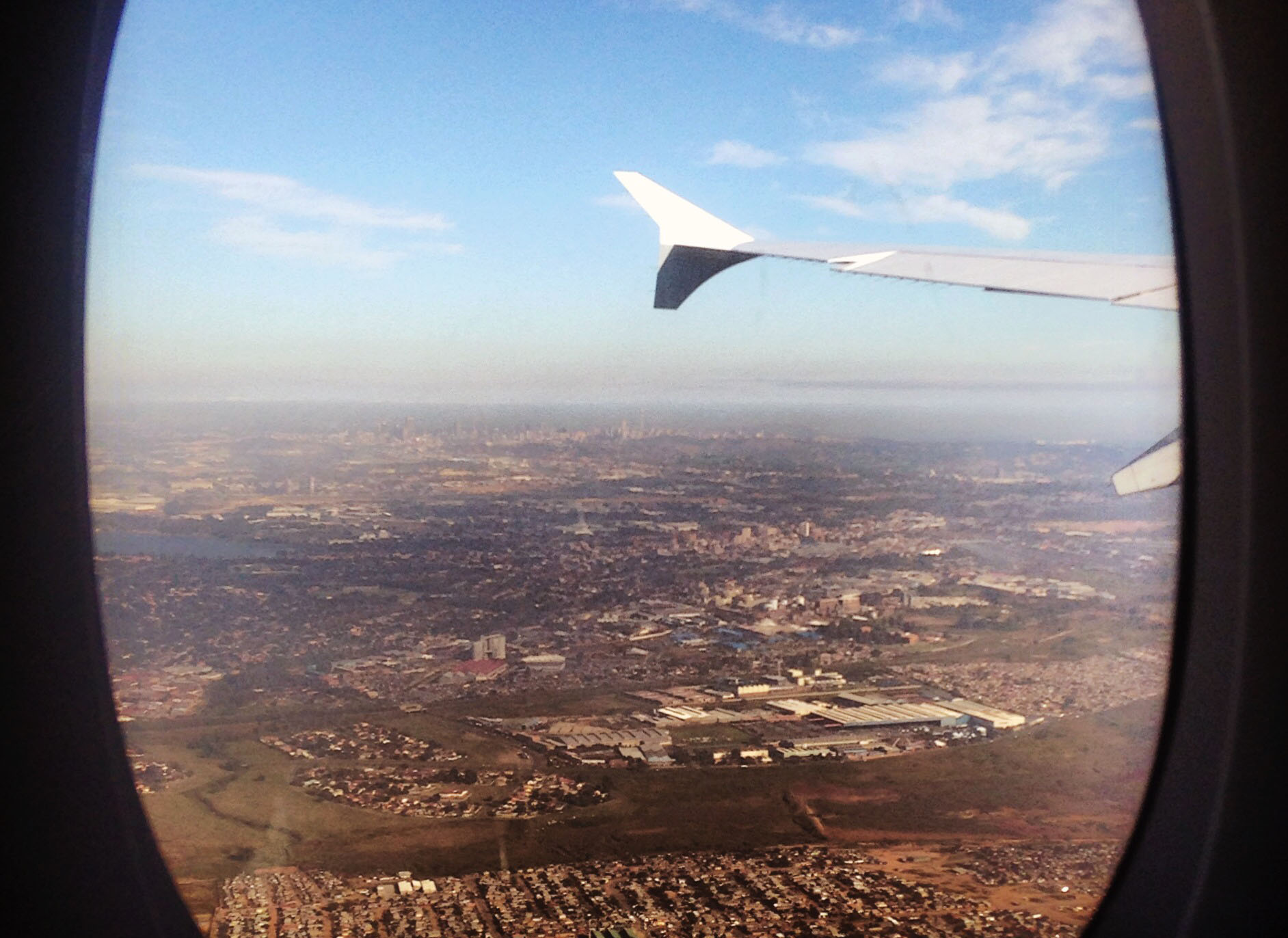
The Red Bull Amaphiko project
Before going on, let’s take a step back to give some context. Less than four weeks ago a fairly boring mid-morning meeting was dramatically interrupted by an excited colleague, Christian, who had a “topic of great urgency” to discuss with me. Red Bull, a client who I work regularly with, had a rather inspiring project coming up called “Red Bull Amaphiko”. Was I interested?
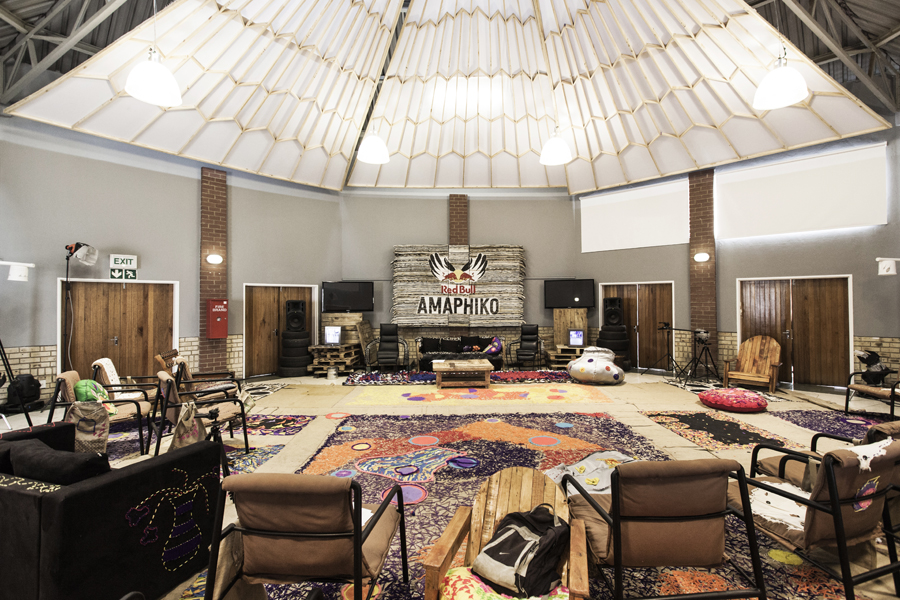 The main room at the Red Bull Amaphiko Academy. Photo by Luke Daniel.
The main room at the Red Bull Amaphiko Academy. Photo by Luke Daniel.
After a short introduction I learned that Red Bull Amaphiko Academy is a 10 day academy which takes place in Soweto, Johannesburg. The Academy is a platform for social entrepreneurs to learn from each other, exchange ideas and knowledge and grow as individuals. Each of them are true pioneers using their talents, creativity and energy to solve social problems and make a change in their communities. All of this was accompanied by a bunch of collaborators giving talks, sessions and hands-on workshops – from filmmakers to writers, photographers to storytellers, and us as designers and developers.
Our contribution to this project would be to create a digital tool for the social entrepreneurs to enable them to tell their stories to a wider audience. First we would create a storybuilder tool and then work with them on-site in Soweto to generate their stories.
The criteria for the project were clear:
– A f**king easy to use interface to build the stories
– Given Internet consumption habits in South Africa, mobile first was a must.
– Last, but certainly not least, create beautiful and immersive stories that capture the attention of global media.
Creating the Storybuilder
Of course, before going to work on-site in Soweto, we needed to build the framework to create these micro-sites quickly and on location. Most importantly we wanted to give these tools to the participants and train them to use them, so that they could continue to grow their stories long after we were gone. We needed a storybuilder tool.
Technology (the nerdy part)
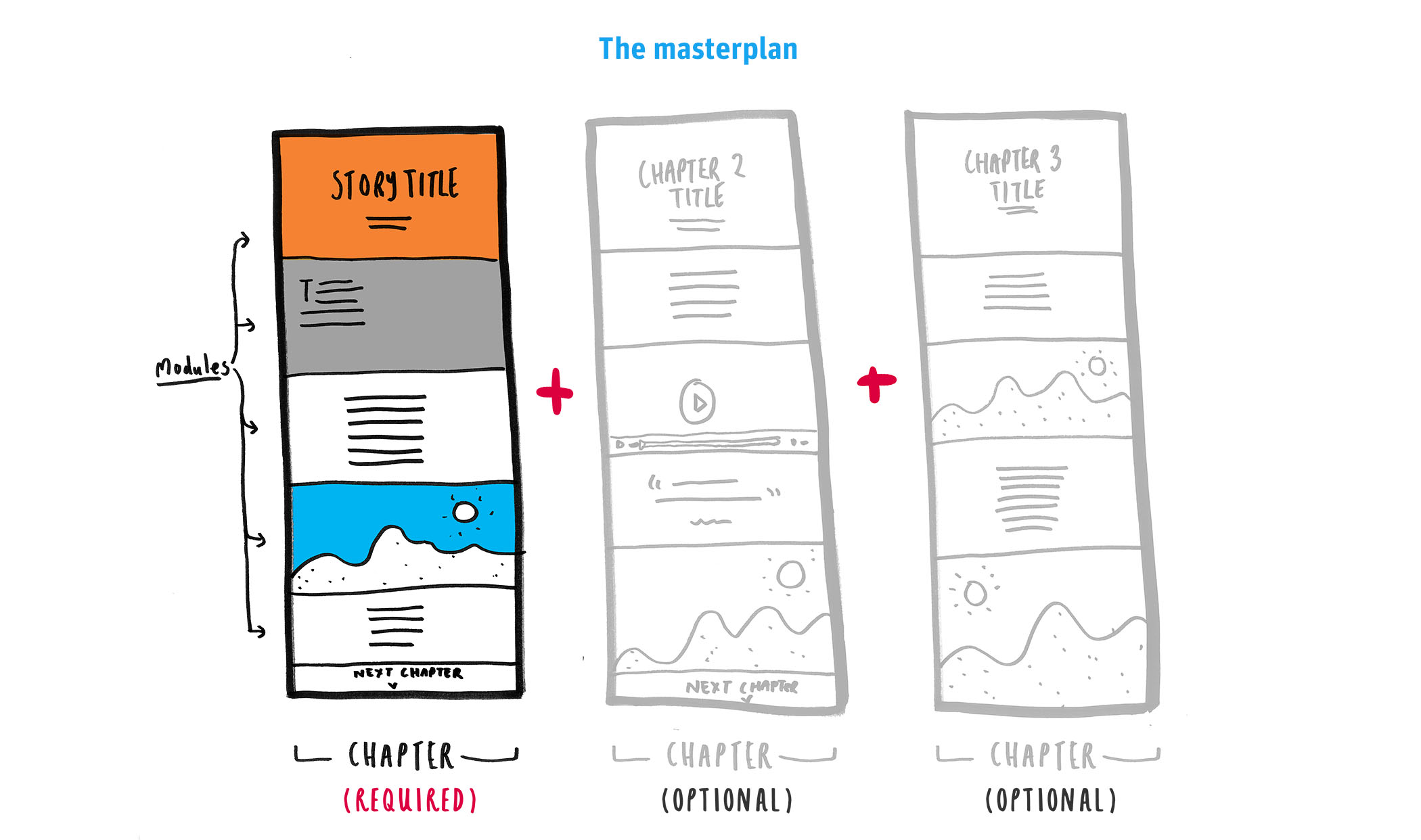 Stories consist of chapters, which are created by combining different modules. It is like a recipe: combine the ingredients to cook a dish.
Stories consist of chapters, which are created by combining different modules. It is like a recipe: combine the ingredients to cook a dish.
Using Ruby on Rails, we created a storybuilder that would allow the Amaphiko participants to easily create an elegant longform piece without requiring any prior design or technical knowledge. We set up 10 basic themes, each with a different colour.
 Modules are the building blocks of each story
Modules are the building blocks of each story
Participants then create their stories using pre-defined “building blocks”. We set up a set of basic module types, including “image”, “text block”, “video” etc. that could be combined and reordered to create an elegant longform story. Think of it like a recipe – the building blocks are the ingredients and they can be then combined to create a story. As their stories grew, the participants could also add additional chapters.
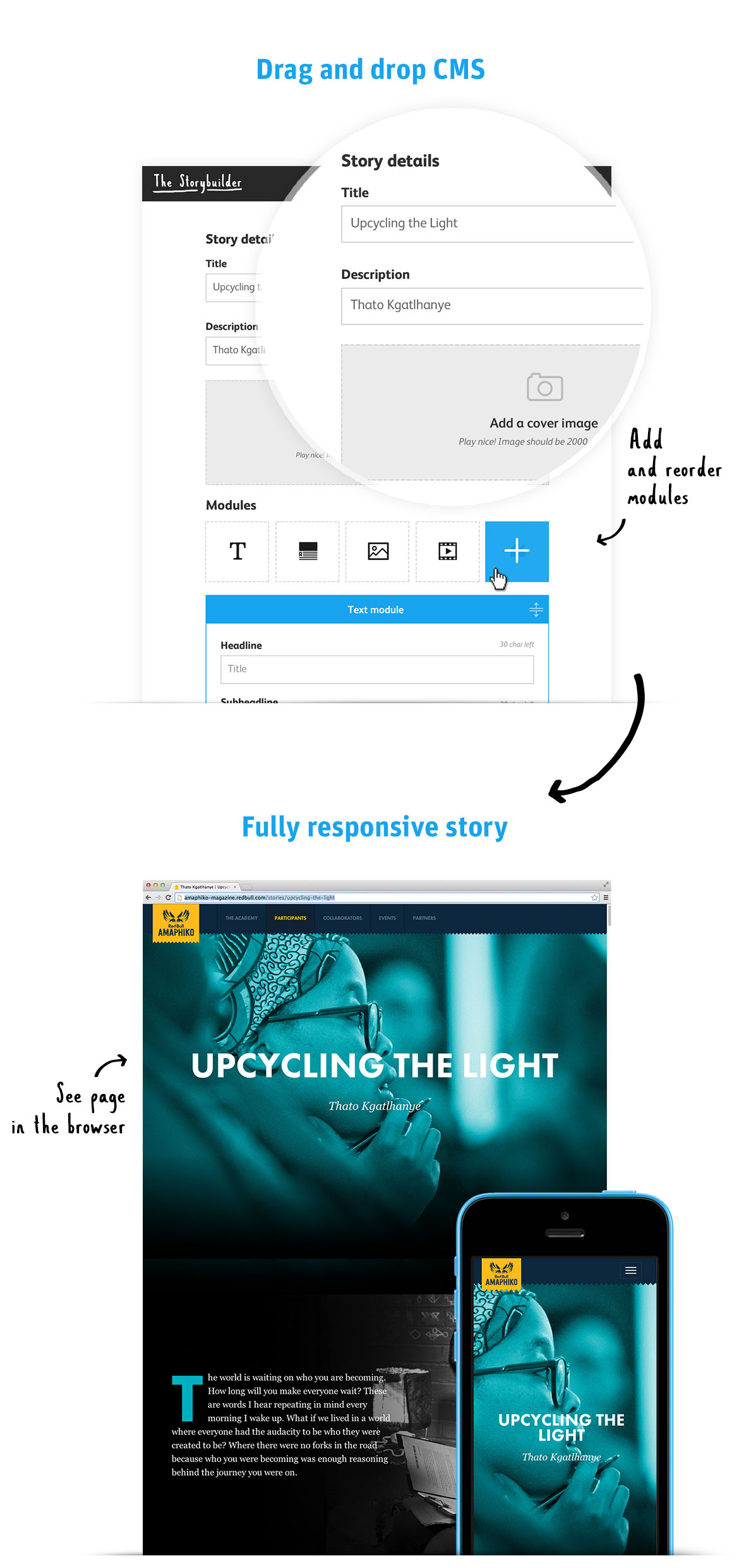
One key consideration from the start was mobile. In this part of South Africa, the feature phone use is one of the key points to access the web, so we needed a solution that worked on all devices – even when the connection was bad (more on bad Internet connections a bit later). So, like all Edenspiekermann projects, we built the stories to be fully responsive, allowing it to work on any device.
On site in Soweto
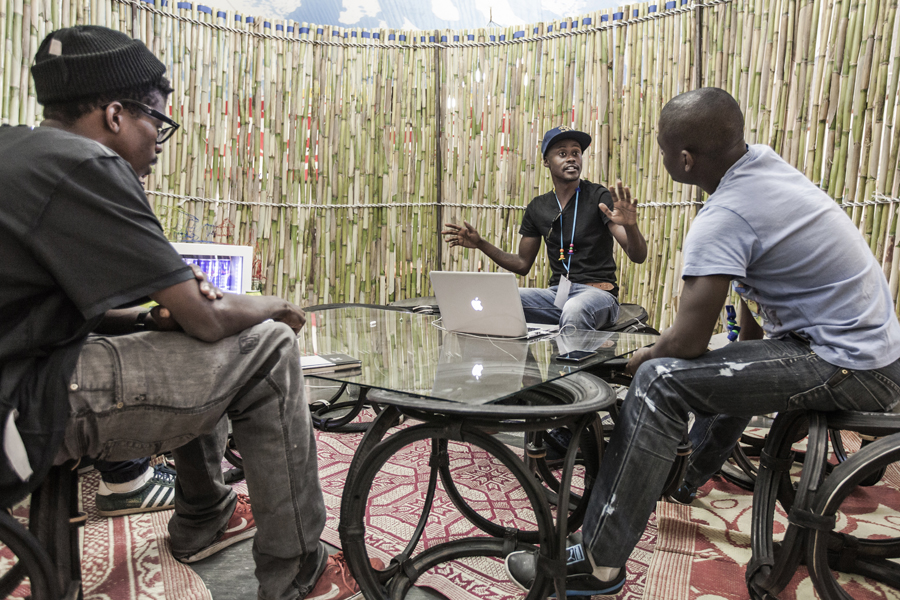 A session in progress at the Academy. Photo by Luke Daniel.
A session in progress at the Academy. Photo by Luke Daniel.
Now, we had a storybuilder. But we still needed stories. And so, after an eleven hour flight, we arrived in Soweto to work with the participants on creating their websites.
In the days preceding our arrival, the social entrepreneurs worked alongside a team of writers who coached them on the best way to tell their stories. A team of talented photographers and videographers were on hand to create the media we needed for to make the stories rich. All the pieces were in place. Well, almost.
Eh, where’s the Internet?
We were ready to start our marathon session. Our team of writers, photographers and communicators seated at a (literal) round table, surrounded by a mountain of blue and silver cans, tangled power cables and a stack of external hard drives. Everything was going to plan. We were ready to start. Except in all our planning we had forgotten one thing. To make a website, we needed the Internet. Shit.
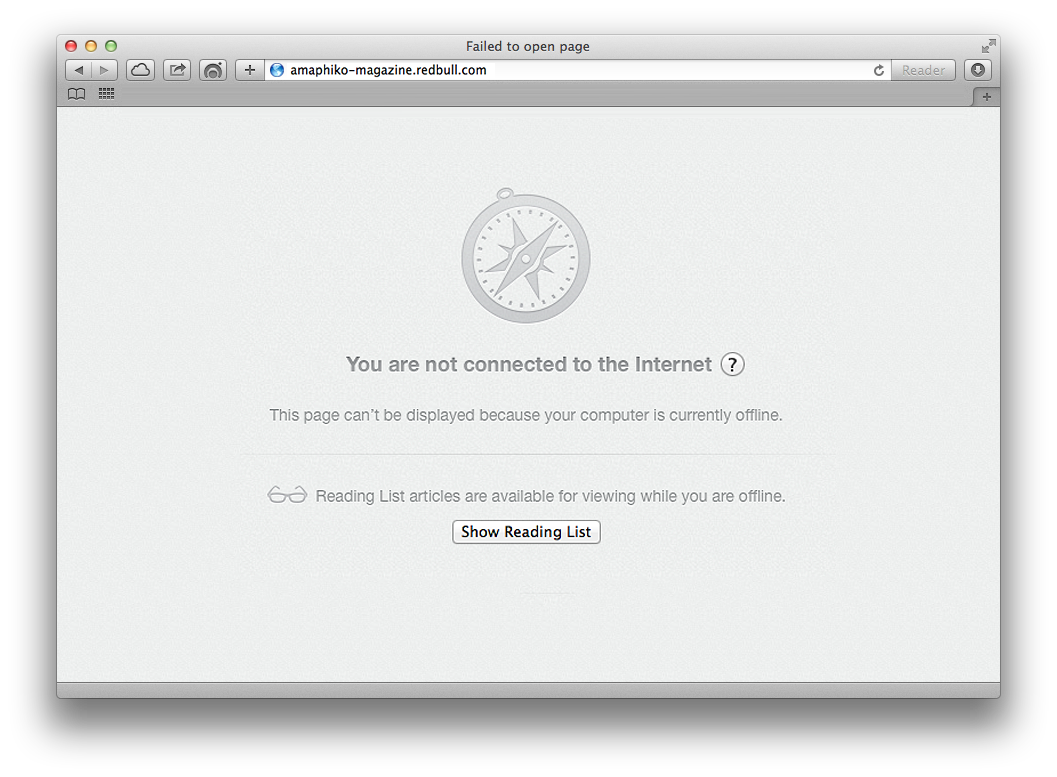 A familiar sight while working on the stories.
A familiar sight while working on the stories.
We scrambled together into the Ford people-carrier and over the 3 days, through a constant back and forth between the hotel and the event site (assisted by some overpriced data roaming), we held onto some semblance of Internet connectivity.
Actually, the poor Internet coverage was a constant reminder of the need for well optimized images and websites in general. While working on the stories, images were definitely crunched in a more aggressive fashion then they would normally be. Exporting as “JPEG Quality equals 55” quickly become “JPEG Quality equals 35”. When checking out the stories on my return to the Internet-heaven that is Berlin, I was pleasantly surprised at how zippy the site was (despite the multiple large image panels).
The marathon: 3 days, 17 stories
Internet problems solved, our team worked together non-stop day and night to build the stories. We finished the last story at 12.50 pm on Sunday afternoon, 10 minutes before they would be presented on the big screen.
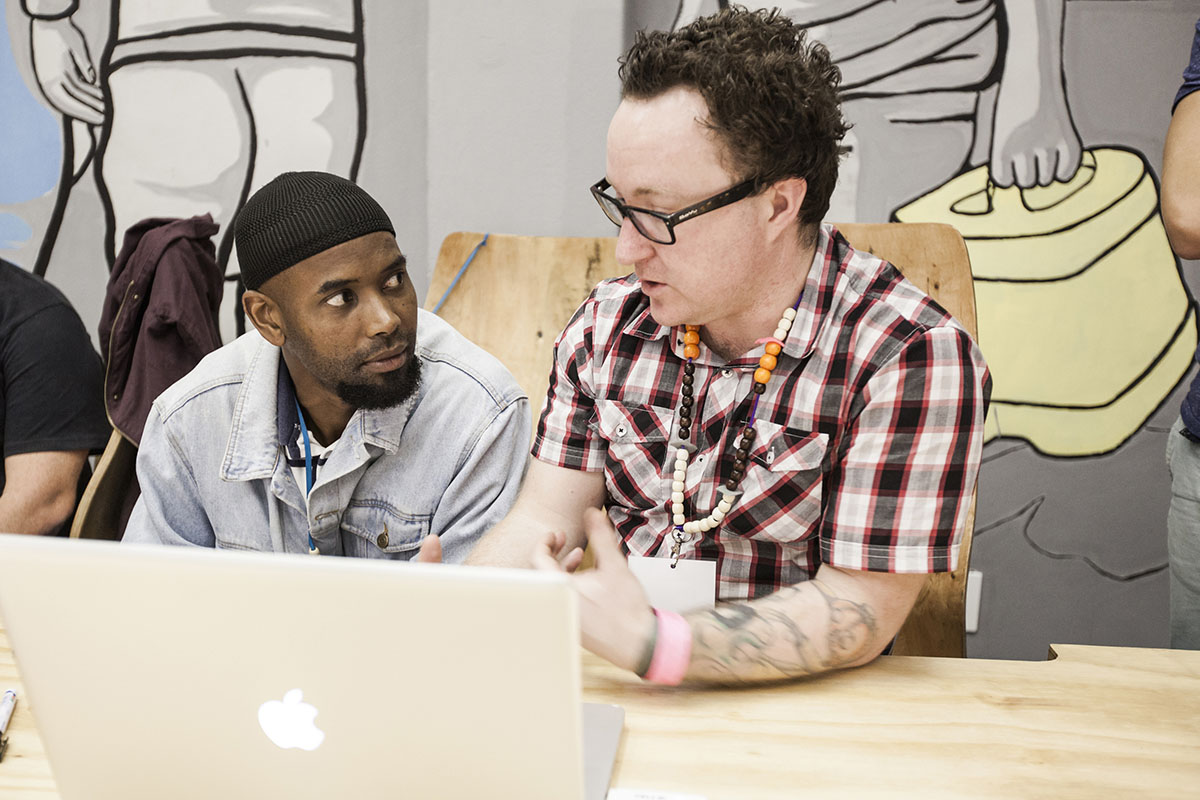 Working with the participants on their stories. Photo by Luke Daniel.
Working with the participants on their stories. Photo by Luke Daniel.
Each story was written by the participants themselves, with the writers only providing guidance on presentation and structure. The result was 17 incredibly personal stories that truly humble the reader. Each story was entirely different, but equally touching. Meshack’s project that supports the economic independence of mentally handicapped, Lauren’s project that develops youth into self aware, creative ambassadors for their community, Rayne’s skateboarding initiative for disadvantaged youths; every one of the 17 projects and their respective founders were a true inspiration that will remain with me for many years to come.
 The Story overview page showing all 17 participant stories
The Story overview page showing all 17 participant stories
Soon after the presentation we had individual feedback sessions with each of the social entrepreneurs, and before we knew it the project was finished. Of course, the last night was filled with emotional exchanging of Facebook details before diving into sing-alongs and perhaps one too-many Vodkas with Tabasco sauce (a local speciality I’m told). For this year, the Red Bull Amaphiko Academy had come to an end. Except, of course, that it doesn’t really end: for the social entrepreneurs it’s just the beginning of the end of a journey that started before us and will continue with renewed enthusiasm, tools and opportunities. Much of the setup was left behind for use by the local community. And of course, our storybuilder will mean the stories of the projects will continue to grow over time.
Reflecting on the experience while on the plane home, I was positively overwhelmed. It was exciting, exhausting and truly rewarding to be involved – even in some small way – with this fantastic and humbling group of individuals.
Bring on next year.
Check out the stories here: Red Bull Amaphiko
Edenspiekermann Team
Christian Hanke
Paul Woods
Matt Berridge
Oliver Zeyen
Lukas Hodel
Cover photo by Luke Daniel.